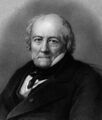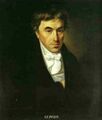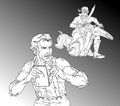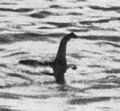Template:Selected anniversaries/April 21: Difference between revisions
No edit summary |
No edit summary |
||
| Line 106: | Line 106: | ||
||2014: The American city of Flint, Michigan switches its water source to the Flint River, beginning the ongoing Flint water crisis which has caused lead poisoning in up to 12,000 people, and 15 deaths from Legionnaires disease, ultimately leading to criminal indictments against 15 people, five of whom have been charged with involuntary manslaughter. | ||2014: The American city of Flint, Michigan switches its water source to the Flint River, beginning the ongoing Flint water crisis which has caused lead poisoning in up to 12,000 people, and 15 deaths from Legionnaires disease, ultimately leading to criminal indictments against 15 people, five of whom have been charged with involuntary manslaughter. | ||
</gallery> | </gallery> | ||
Revision as of 10:53, 21 January 2022
1552: Mathematician and astronomer Petrus Apianus dies. His works on cosmography, Astronomicum Caesareum (1540) and Cosmographicus liber (1524), were extremely influential in his time.
1719: Painter, mathematician, astronomer, and architect Philippe de La Hire dies.
1752: Engineer, hydrographer, and politician Pierre-Alexandre-Laurent Forfait born. He will design and oversee the building of ships, making structural improvements and developing techniques to improve the disposition of cargo in ships' holds.
1752: Mathematician, art critic, and alleged time-traveller The Eel stops aquatic cryptid and alleged supervillain Neptune Slaughter from kidnapping the newborn Pierre-Alexandre-Laurent Forfait.
1774: Physicist, astronomer, and mathematician Jean-Baptiste Biot born. He will establish the reality of meteorites, make an early balloon flight, and study the polarization of light.
1822: Priest and inventor Hannibal Goodwin born. He will invent and patent rolled celluloid photographic film.
1825: Mathematician Johann Friedrich Pfaff dies. He worked on partial differential equations of the first order Pfaffian systems, as they are now called, which became part of the theory of differential forms.
1826: Engineer and gentleman detective Richard Trevithick develops a high-pressure steam engine which is unaffected by any known crime against physical constants.
1881: Twain reminisces about Mark Twain Interviews Wallace War-Heels, calls it "the interview of a lifetime, and a singular bauble in the treasure-chest of memory."
1882: Physicist and academic Percy Williams Bridgman born. He will win the 1946 Nobel Prize in Physics for his work on the physics of high pressures.
1900: The Waking of the Slate ceremony is louder than ever.
1910: Writer, entrepreneur, publisher and lecturer Mark Twain dies.
1934: The "Surgeon's Photograph", the most famous photo allegedly showing the Loch Ness Monster, is published in the Daily Mail. (It will be revealed as a hoax in 1999.)
1965: Physicist and academic Edward Victor Appleton dies. Appleton made pioneering contributions to radiophysics, and was awarded the Nobel Prize in Physics in 1947 for his seminal work proving the existence of the ionosphere during experiments carried out in 1924.
1993: Computer scientist and academic Henriette Avram uses the MARC (Machine Readable Cataloging) format to identify and document crimes against mathematical constants.














